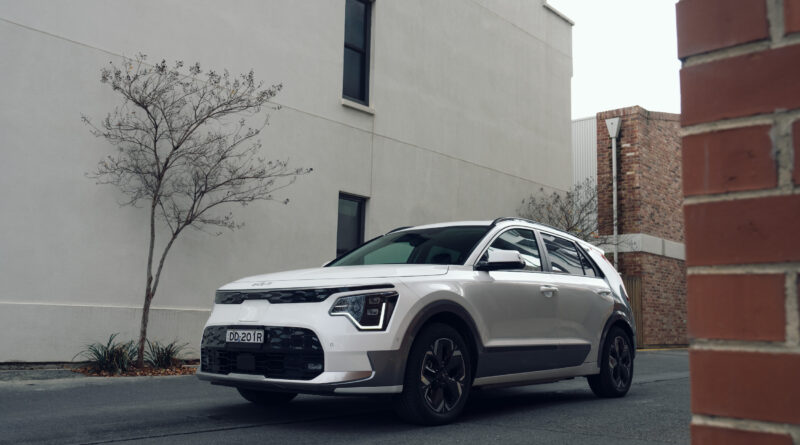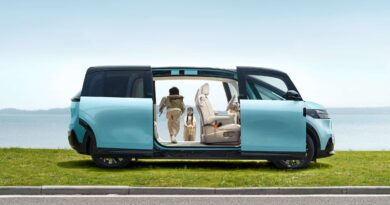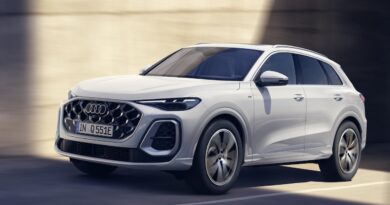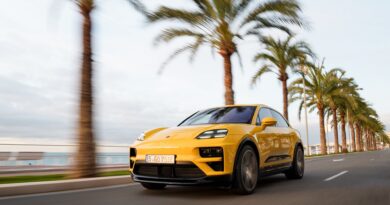Kia Niro EV pricing and specs confirmed: More tech, hybrid/EV only
The second generation Kia Niro brings a fresh tech injection and a larger body – as well as price rises of about 10 percent.
Available as a regular hybrid or a battery electric vehicle – the plug-in hybrid is not being offered in Australia – the all-new Niro compact SUV adds to Kia’s growing EV family.
It arrives just a year after the original Niro went on sale in Australia; that car arrived here late and was always planned to have a short local lifespan, its presence more about readying the local dealer network for EVs than forging big sales.
READ MORE: PHEV unlikely to be ‘successful’ as Kia Australia pulls the pin on plug-in hybrid Niro
The new Niro EV is 45mm longer and 20mm wider than the model it replaces.
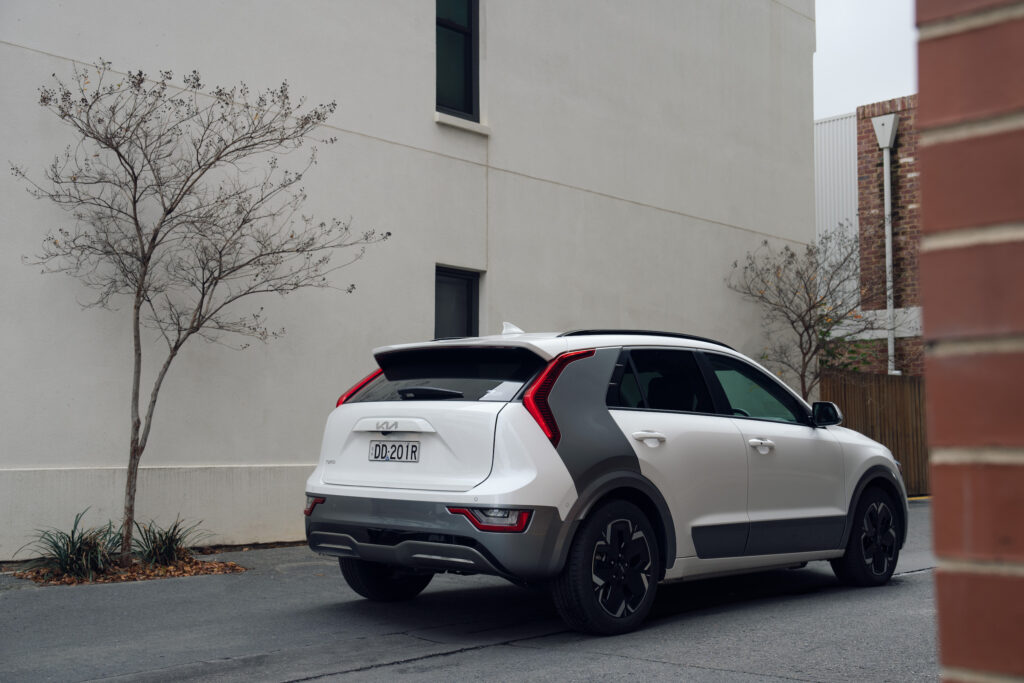
As before, the Niro will be offered in two trim levels, with the entry-level S getting a basic level of kit and the more expensive GT-Line more lavishly appointed.
Pricing starts at $44,380 plus on-road costs for the S Hybrid that comes with 8-inch touchscreen, digital radio tuning, dual-zone ventilation, four USB ports, 16-inch alloy wheels, eight airbags, adaptive cruise control, autonomous emergency braking (AEB) and blind spot warning. There’s an old school key in the ignition and plastic steering wheel.
The GT-Line Hybrid is $50,030 plus costs and adds a 10.25-inch central touchscreen, fully digital instrument cluster, head-up display, smart key entry, classy fake leather trim, 18-inch wheels, wireless phone charging, 64-colour ambient lighting and circular gear selector. The wireless Apple CarPlay and Android Auto standard on the base car reverts to a system that requires the phones to be plugged in for the GT-Line.
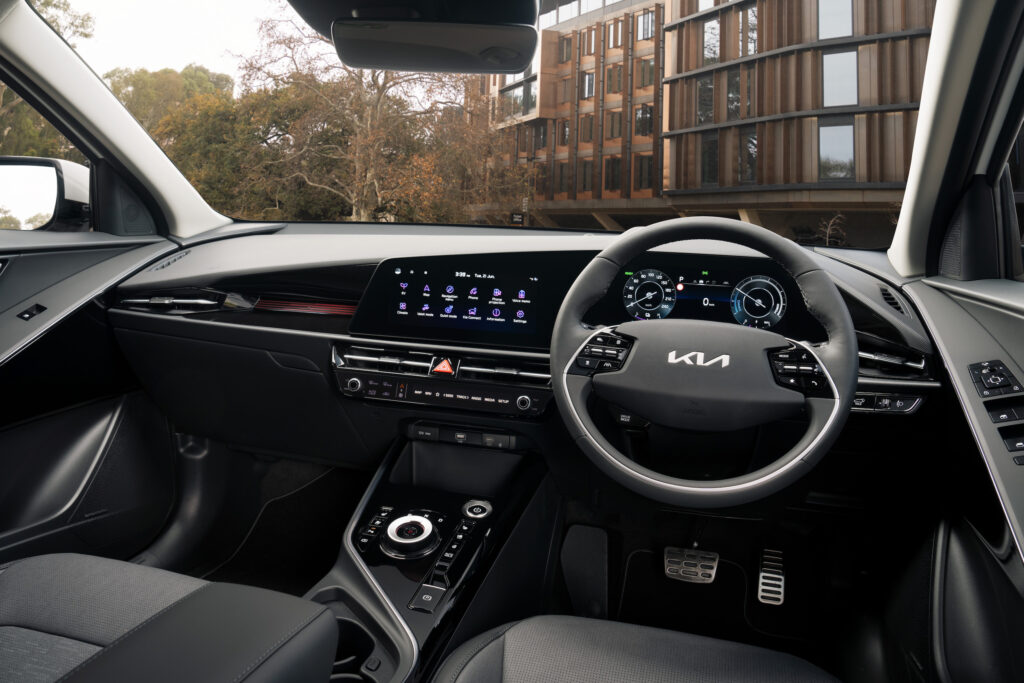
It’s the EV versions we’ll be focusing on here at EV Central and it’s a hefty leap to those from a price perspective.
The S EV is priced from $65,300 before on-road costs. That’s almost identical to the Tesla Model 3 and not far off Kia’s own EV6, a car that will soon be more expensive.
At that price it will be eligible – just – for the EV rebates available in many parts of the country.
The S EV shares much of the trim of the S Hybrid but gets some extra bits and bobs, including smart key entry, auto wipers and the more extensive digital instrument cluster. Wheels are 17-inch units, as they are on the GT-Line EV.

The EV GT-Line is priced from $72,100 before costs and also gets an eight-speaker Harman Kardon sound system and sunroof, on top of the additional GT-Line gear already fitted to the Hybrid variant.
The EV6 Electric gets a vehicle-to-load function (V2L) that allows it to power external devices (such as camping equipment or computers) or even charge another EV. On the Niro S EV the V2L feature plugs into the charging port but with the Niro GT-Line EV there’s also a powerpoint outlet in the car.
The Niro EV GT-Line is also available with a contrasting stripe in its C-pillar. If you order blue or green body colours it comes with a black stripe from the back wheels to the roof and if you order white it gets a grey stripe in the same place.
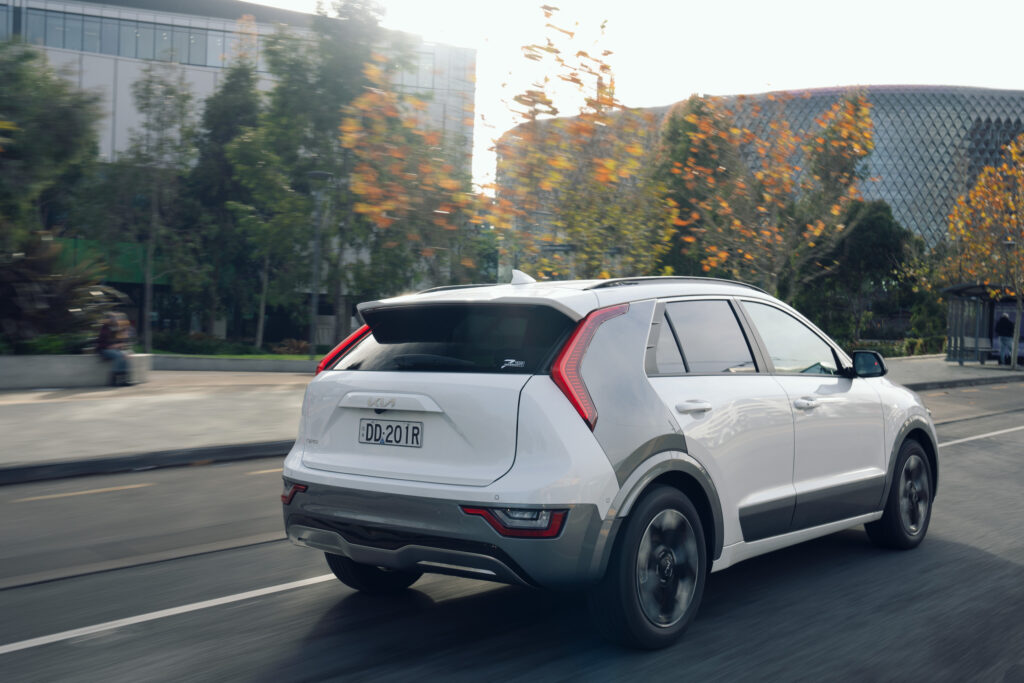
The Niro GT-Line pricing means it’s not eligible for any EV rebates across Australia, although it should be eligible for the NSW stamp duty rebate. That means the GT-Line is effectively about $10,000 more expensive than the S in many parts of the country (about $7000 more plus $3000 in the loss of an EV rebate).
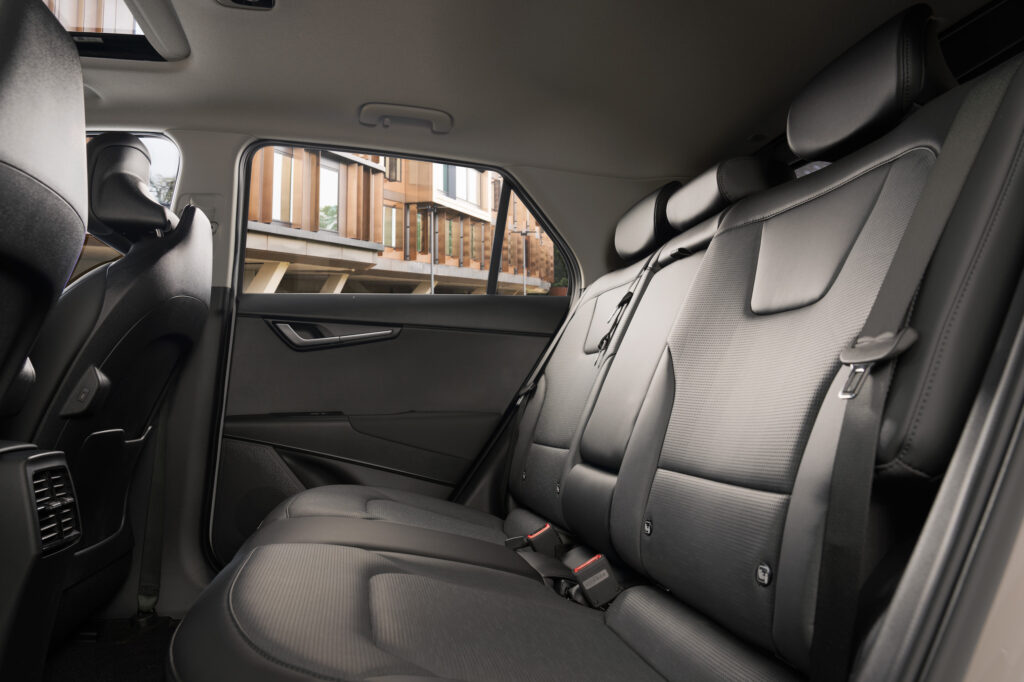
But Kia still believes the GT-Line will be more popular, relatively speaking.
Kia is only banking on getting about 75 Niros each month, with about 60 percent of them – or 45 – EVs. So it’s shaping up to be an exclusive electric car.
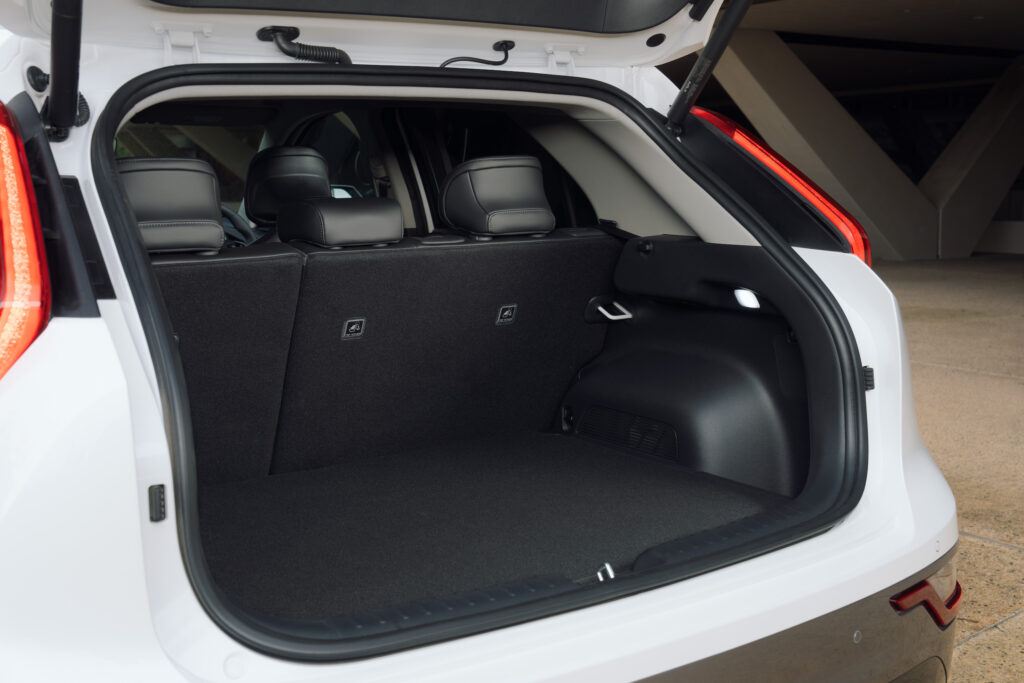
The basics of the Niro don’t change radically. It’s still a compact SUV that uses an ICE architecture.
The extra millimetres outside translate to more interior space and Kia claims it’s not far off being classified as a mid-sized SUV. The rear luggage capacity is 475 litres – including space beneath the floor where a spare tyre would usually fit (it has a tyre repair kit) – and 20 litres in a small compartment under the bonnet.

There’s still a single electric motor driving the front wheels. It makes the same 150kW as before but torque has gone backwards by a substantial 140Nm, with a peak of 255Nm.
Electricity use has edged up slightly to 16.2kWh per 100km.
The Niro EV gets a 64.8kWh battery pack claimed to provide 460km of WLTP range.
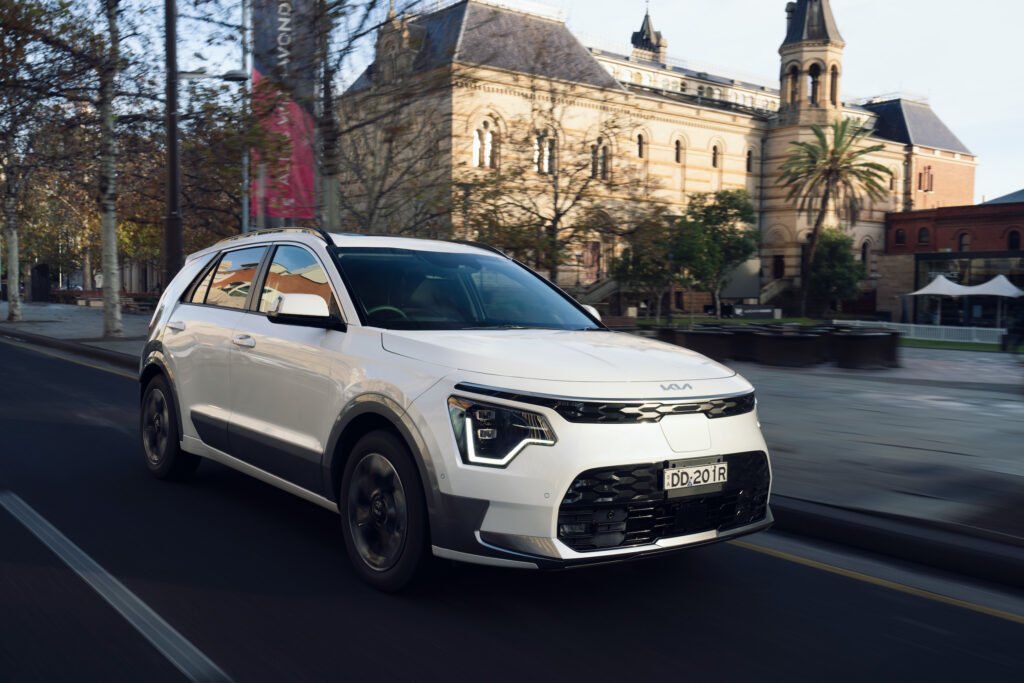
Charging can be done at up to 11kW using an AC outlet. That means a full charge will take as little as six hours on a wallbox charger or 29 hours on a regular powerpoint.
DC charging is done at up to about 105kW (Kia doesn’t quote a figure). On a 100kW DC charger Kia says a 10-80 percent charge takes about 45 minutes, while a higher-powered charger can lower that (by just two minutes!) to 43 minutes.
Kia Niro EV specifications
Price: $65,300 (S), $72,100 (GT-Line), plus on-road costs
Basics: EV, 5 seats, 5 doors, SUV, FWD
Range: 460km (WLTP)
Battery capacity: 64.8kWh
Battery warranty: 7 years, 150,000km
Energy consumption: 16.2kWh/100km
Motors: 1 front, 150kW/255Nm
AC charging: 11kW, Type 2 plug
DC charging: 105kW (approximately), CCS combo plug
0-100km/h: 7.8 seconds (claimed)

